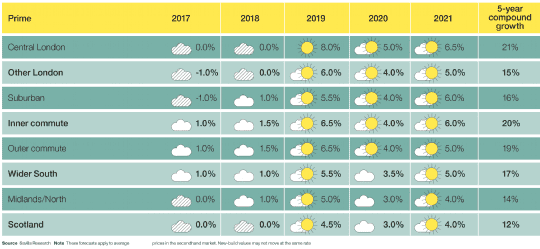The pressures of taxation and uncertainty over Brexit are expected to continue to weigh on the market over the next two years, with the general election on 8 June compounding the uncertainty in the short term. However, as the prime markets adjust to the changed tax environment and benefit from greater certainty over the political and economic outlook, we expect a return to price growth.
A cut in stamp duty at the top end of the market is less a probability than a possibility over the short to medium term. There is little doubt that a cut would act as a boost to the prime housing market, but it cannot be relied upon.
We have seen prices adjust to these increases, but we now expect a period of broadly static prices as the market becomes more accustomed to higher transactional costs. During this period, overseas buyers' greater exposure to capital gains tax and inheritance tax is likely to temper the effect of weak sterling in the central London market.

.png)
.png)
.png)
.png)
.png)
.jpg)
.jpg)
.jpg)